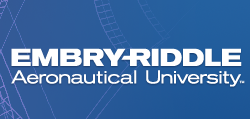Presentation Type
Student Poster Competition
Student Poster Abstracts, available categories:
Freshman/Sophomore Engineering Design Teams
Abstract
Our team, the jet engineers, set out to find solutions for the obsolete KJ66 model turbine engine used for static testing and RC plane flying. Our goal was to design a more efficient and performance enhanced model that will compete with new models on the market. We found plans for the original model on the "John-Tom.com" website. The website also has design improvements for certain parts that will improve performance. Using that as our basis, our team modeled the turbine engine using a computer-aided design program called CATIA. Through this model we changed the turbine stator vanes so that they are now removable instead of welded. This improves maintenance and is cost efficient because of how simple it is to remove a selected stator vane when it is damage. The team incorporated hydrodynamic bearings instead of ball bearings for performance under operating speeds of over 100,000 RPM. The cowl was a simple improvement that most model engines had but was not in the plan sheets. Electrical components such as the full authority digital engine control are stored inside the cowl and it improves aerodynamic properties of the engine when mounted outside of RC airplanes. Mounting brackets and exhaust cone struts were also incorporated into our model. Materials were selected based on properties such as heat resistance, strength, and price. Upon completion of modeling and adding materials we completed our model successfully with a price of only $1081.89 and other models on the market going for as little as $2000.
Previous Versions
KJ66 REVAMP
Our team, the jet engineers, set out to find solutions for the obsolete KJ66 model turbine engine used for static testing and RC plane flying. Our goal was to design a more efficient and performance enhanced model that will compete with new models on the market. We found plans for the original model on the "John-Tom.com" website. The website also has design improvements for certain parts that will improve performance. Using that as our basis, our team modeled the turbine engine using a computer-aided design program called CATIA. Through this model we changed the turbine stator vanes so that they are now removable instead of welded. This improves maintenance and is cost efficient because of how simple it is to remove a selected stator vane when it is damage. The team incorporated hydrodynamic bearings instead of ball bearings for performance under operating speeds of over 100,000 RPM. The cowl was a simple improvement that most model engines had but was not in the plan sheets. Electrical components such as the full authority digital engine control are stored inside the cowl and it improves aerodynamic properties of the engine when mounted outside of RC airplanes. Mounting brackets and exhaust cone struts were also incorporated into our model. Materials were selected based on properties such as heat resistance, strength, and price. Upon completion of modeling and adding materials we completed our model successfully with a price of only $1081.89 and other models on the market going for as little as $2000.
